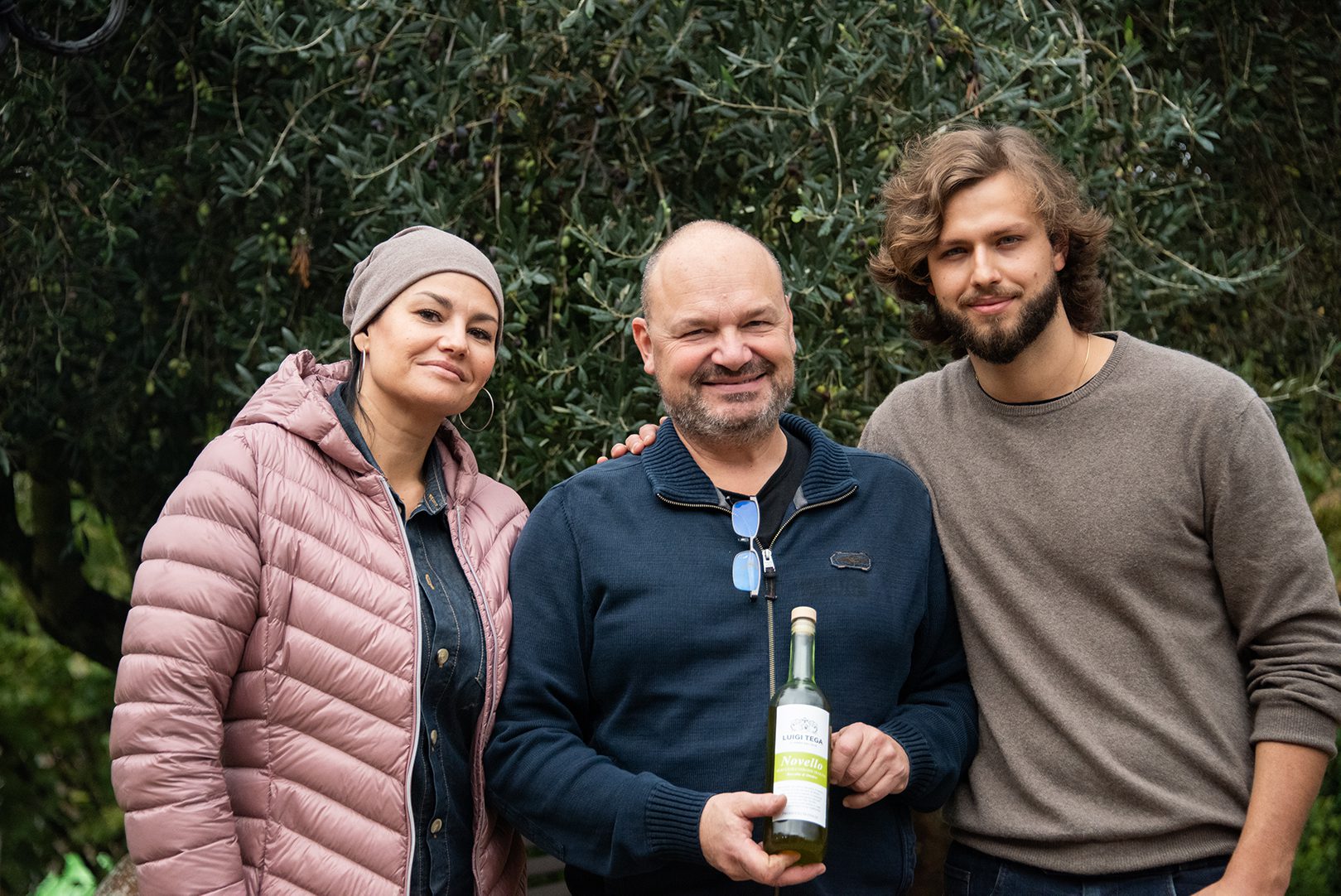


For the Tega family, the production of extra virgin olive oil has always been more than a simple entrepreneurial activity: it has been a lifestyle, a tradition handed down from generation to generation. Over time, we have diligently perfected the production process, from the scrupulous selection of olive varieties to the precise moment of harvesting, carefully monitoring each phase during processing in the mill.
In 1950, Luigi Tega, nicknamed “Gigetto”, declared his ambition to produce “the best oil in the world”. Today, with the fourth generation of the Tega family, we carry forward its creative ambition through our extra virgin and flavored oils, aspiring to create harmony, a source of powerful emotions.
Our knowledge is dedicated to the creation of oils with a traditional flavor and also those with a new and original taste. Luigi Tega’s incessant creative ambition is the search for harmony as an objective in excellence. From this perspective, every milling process is subjected to rigid constraints.
We constantly strive to obtain first-rate extra virgin olive oil, selecting the best olives with dedication, facing every adversity and even giving up the production of a year if the fruit does not reach the high quality standards we set for ourselves.
There are stories that pulsate with a life of their own, transcending the boundaries of time and space, connecting people and inspiring ideas. They are stories that arise from nothing and become a reason for existence. Stories that are transformed into bricks, walls, houses. Companies.
Our values are solid and unshakeable, they constitute the foundation on which a history spanning over 80 years has been built. Respect for one’s territory, stylistic coherence, which has never winked at easy production routes, the patience and technique that the production of iconic extra virgin oils such as Lirys and Olio del Cardinale requires.
It has never been enough for us to perpetuate the same style, we have always felt the need to question ourselves. Because keeping faith with a mission means respecting what has been done and at the same time thinking about it every day, constantly experimenting to guarantee quality that meets the highest quality standards that have made us what we are today.
The process of producing a high-quality extra virgin olive oil is a commitment that extends over an entire year, aiming to obtain the perfect fruit. However, one event such as a hailstorm or incorrect harvesting is enough to compromise the entire year’s work.
It is crucial that once harvested, the olives are immediately transported and ground in the mill within 3-6 hours to avoid oxidative and fermentative processes which can drastically influence the final quality of the extra virgin oil. In the oil mill, even in less than an hour, there is a risk of ruining the whole year of care and attention dedicated to the cultivation of olives if they are pressed badly or if adequate care and attention is not paid to the pressing process.
We like meeting people, shaking hands, sharing lunches and dinners. We love to circulate ideas, combine points of view and create new ones.
Our historic 16th century oil mill, immersed in the green Menotre valley in Umbria, always welcomes you with open arms for a visit, a tasting of bruschetta with oil or a picnic among the flowering olive trees on our sunny hills.
These awards demonstrate our commitment to producing fine oils, created with the utmost care and attention.
Luigi Tega
Every great story has deep roots, which are intertwined with those of the past and go back to the origin of everything. Our story begins in our oil mill, located in Vescia, a hamlet of Folignate, downstream of the Menotre river. Over the centuries, our manufacturing process has been continually perfected.
The original mill, dating back to the 16th century, was powered by water power, thanks to a special canal dug next to the Menotre River. Even today, those who visit our oil mill can notice that our road is called “Via dei Frantoi”, in homage to the numerous oil mills and mills that once operated along the waterways coming from the Altolina mountains.





